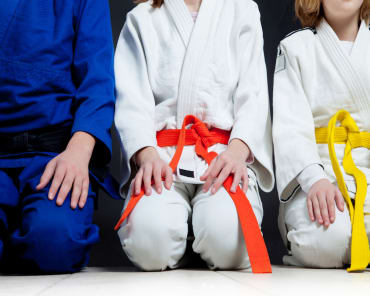Brazilian Jiu-Jitsu (BJJ) is a versatile martial art that has gained popularity for both self-defense and competitive sport. While both aspects share foundational techniques and principles, their applications, training methods, and philosophies can vary significantly. Understanding these differences can help practitioners choose the right focus for their training.
1. Objectives and Goals
Self-Defense Jiu-Jitsu: The primary goal of self-defense-focused Jiu-Jitsu is to equip practitioners with practical skills to protect themselves in real-life situations. This approach emphasizes techniques that can be applied effectively in confrontational scenarios, focusing on escaping dangerous situations and neutralizing threats quickly and efficiently.
Sport Jiu-Jitsu: Competitive sport Jiu-Jitsu aims to win matches within a structured framework of rules and regulations. The focus is on scoring points through technique execution and positional control rather than merely neutralizing an opponent. This style prioritizes winning competitions, and practitioners train with an emphasis on performance, strategy, and tactics.
2. Training Methods and Techniques
Self-Defense Jiu-Jitsu: Training in self-defense often includes techniques designed for real-world scenarios. This may involve:
- Emphasis on Striking and Awareness: Self-defense training often incorporates awareness strategies and defensive maneuvers against strikes. Practitioners learn to recognize and avoid potentially dangerous situations and use striking as a means of defense when necessary.
- Simple and Effective Techniques: Techniques tend to focus on simplicity and effectiveness, favoring moves that can be executed quickly and efficiently under stress. For example, self-defense training may include techniques such as escapes from grabs, defenses against common attacks, and methods for escaping from unfavorable positions.
- Scenario-Based Drills: Self-defense training often includes situational drills that simulate real-life encounters, allowing practitioners to practice their skills in a controlled environment while experiencing the stress and unpredictability of actual confrontations.
Sport Jiu-Jitsu: In competitive training, techniques focus on gaining advantages in matches, including:
- Advanced Techniques and Positions: Sport Jiu-Jitsu emphasizes complex techniques and positions, such as guard passing, sweeps, and submissions, that may not be as applicable in a self-defense context. Competitors often train to gain points and maintain dominant positions.
- Rule Familiarity: Practitioners become well-versed in the specific rules of their competitions, which influences their training. For example, techniques that are legal in competition might not be advisable for self-defense (e.g., certain guard positions).
- Live Sparring: Training often includes a significant amount of live sparring (rolling) against resisting opponents, which helps practitioners improve their ability to apply techniques effectively in a competitive setting.
3. Mindset and Philosophy
Self-Defense Jiu-Jitsu: The mindset of self-defense practitioners often revolves around awareness, prevention, and survival. They are taught to prioritize de-escalation and avoidance whenever possible. If confrontation is unavoidable, the focus is on protecting oneself and escaping danger rather than engaging in prolonged combat.
Sport Jiu-Jitsu: In contrast, the competitive mindset emphasizes performance, strategy, and the thrill of competition. Practitioners are trained to embrace the challenges of competition, focusing on developing their skills, learning from losses, and continuously improving. This environment fosters camaraderie and sportsmanship among practitioners, as they share the common goal of competing against one another.
4. Physical Conditioning and Preparation
Self-Defense Jiu-Jitsu: Training may incorporate broader physical conditioning and functional fitness to prepare practitioners for the physical demands of real-world altercations. Conditioning may include strength training, agility drills, and endurance workouts designed to enhance overall fitness and resilience.
Sport Jiu-Jitsu: Competitive training often emphasizes specific conditioning tailored to the demands of matches, including explosive power, cardiovascular fitness, and endurance. Practitioners may also work on weight management to fit into specific competition classes, which adds an additional layer of physical preparation.
5. Community and Culture
Self-Defense Jiu-Jitsu: The self-defense community often emphasizes personal safety, empowerment, and practical skill acquisition. Classes may attract individuals seeking confidence and personal development rather than competition.
Sport Jiu-Jitsu: The competitive community fosters a culture of teamwork, sportsmanship, and camaraderie, with practitioners often forming close bonds through shared experiences in training and competitions. Competitors often participate in events that create a sense of community among practitioners from different schools and backgrounds.
Conclusion
Both self-defense and sport Jiu-Jitsu offer unique benefits and challenges, catering to different goals and aspirations. Understanding the distinctions between the two can help individuals choose the path that aligns with their interests, whether they seek practical self-defense skills or the excitement of competition. Regardless of the focus, Brazilian Jiu-Jitsu provides invaluable lessons in discipline, respect, and personal growth, making it a rewarding endeavor for practitioners at any level.






